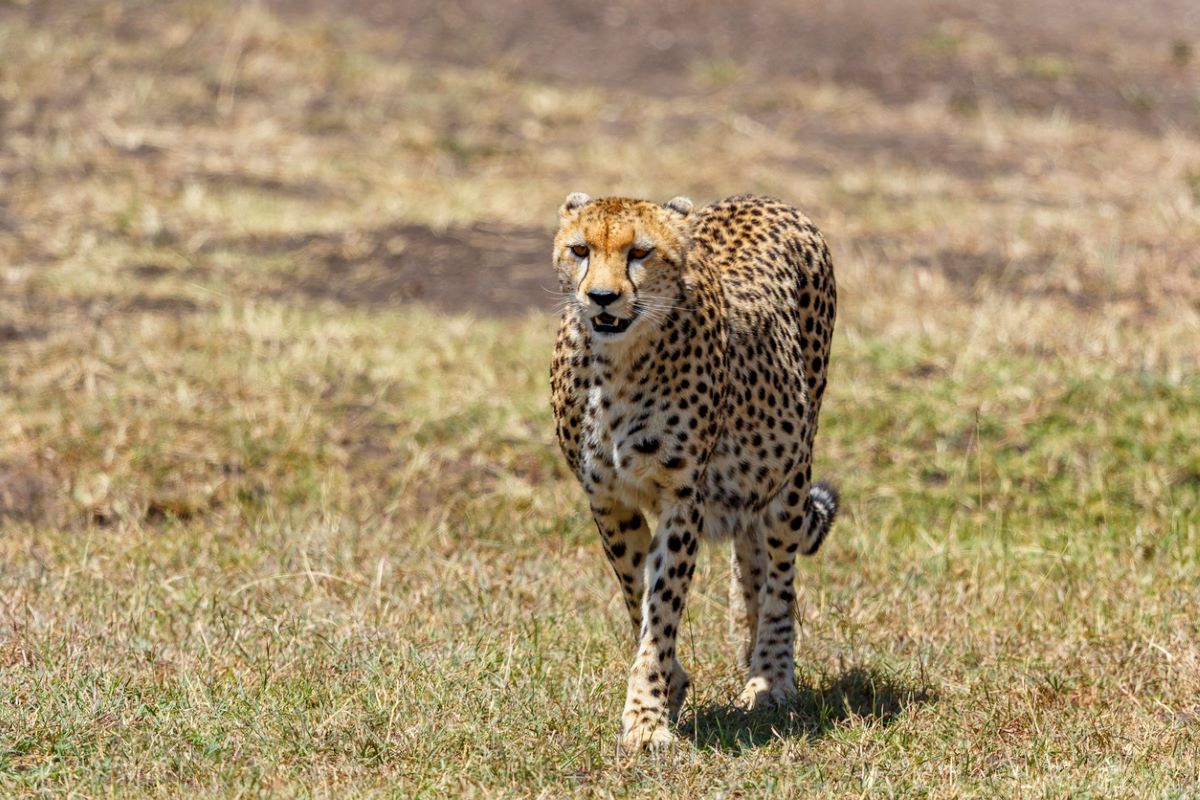Enjoy ecological wonders with the thrill of wildlife in Madhya Pradesh
Adventure, discovery and the thrill of the unknown are calling!
The experts visited Kuno National Park in Madhya Pradesh to review Project Cheetah after the recent death of two Cheetahs.

[Representational Photo : iStock]
Experts have reviewed Project Cheetah after the recent death of two Cheetahs and visited Kuno National Park in Madhya Pradesh, where 20 Cheetahs were translocated in September 2022 and February 2023 from Southern Africa in an ambitious project to re-establish the species within its historical range in India.
Engaged by the National Tiger Conservation Authority (NTCA), the experts’ team examined all aspects of the project during its visit to Kuno Park on 30 April and submitted a comprehensive report on the way forward.
Advertisement
The experts have observed that considering the magnitude and complexity of the project, it was not surprising that the project faced many challenges. This was the first intercontinental reintroduction of a wild, large carnivore species and therefore there was no comparable historical precedent.
Advertisement
As per details of the two Cheetahs’ death recently, Sasha, the six-year-old female from Namibia became ill in late January. Her blood results indicated that she had chronic renal insufficiency. She was successfully stabilised by a veterinary team at the Park, but later died in March. A post-mortem confirmed the initial diagnosis.
The disease is not infectious and cannot be transmitted from one animal to another. It therefore posed no risk to any of the other Cheetahs in the project. Uday, an adult male of uncertain age from South Africa developed acute neuromuscular symptoms on 23rd of April, just over a week after he was released from his quarantine camp into a much larger acclimatisation camp.
During the morning monitoring, it was noted that he was stumbling around in an uncoordinated manner and was unable to lift his head. He was sedated by the Park veterinary team and treated symptomatically. He unfortunately died later same afternoon. The initial examination revealed that he had most likely died of terminal cardio-pulmonary failure.
Importantly, his relatively normal blood results and normal white blood cell count indicated that he was not suffering from any infectious disease that could pose a risk to any of the other animals. The other cheetahs have been closely monitored and none of them has shown any similar symptoms. They all appear to be perfectly healthy, are hunting for themselves and displaying other natural behaviours.
The NTCA experts team comprised Adrian Tordiffe, Veterinary Wildlife Specialist, Faculty of Veterinary Science, University of Pretoria, South Africa; Vincent van dan Merwe, Manager, Cheetah Metapopulation Project, The Metapopulation Initiative, South Africa; Qamar Qureshi, Lead Scientist, Wildlife Institute of India, Dehradun; and Amit Mallick, Inspector General of Forests, NTCA.
The project hopes to benefit global cheetah conservation efforts by providing up to 100 000 km2 of habitat in legally protected areas and an additional 600 000 km2 of habitable landscape for the species. Cheetahs fulfil a unique ecological role within the carnivore hierarchy and their restoration is expected to enhance ecosystem health in India.
As a charismatic species, the Cheetah can also benefit India’s broader conservation goals by improving general protection and ecotourism in areas that have been previously neglected.
Due to careful planning and execution, all 20 Cheetahs survived the initial capture, quarantine and lengthy transport to the purpose-built quarantine and larger acclimatization camps in KNP in Madhya Pradesh.
Releasing the Cheetahs into free-roaming conditions poses substantial risks. Like Kuno, no Protected Areas in India are fenced. Animals are thus free to move in and out of the park as they wish. Cheetahs, like other large carnivores, are known to range widely during the initial few months after being reintroduced into unfamiliar open systems.
These movements are unpredictable and depend on many factors. After several months the cheetahs should establish their own communication networks and settle down in relatively fixed home ranges, experts have said.
While many have made predictions about the anticipated carrying capacity of cheetahs in the Kuno Park based on other ecosystems in Namibia and East Africa, the actual number of animals that the reserve can accommodate can only be assessed after the animals are released and have established home ranges.
Cheetah home-range sizes and population densities vary tremendously for different cheetah populations in Africa and for obvious reasons, useful spatial ecology data for cheetahs is not available in India yet.
To date, four of the cheetahs from Namibia have been released from the fenced acclimatization camps into free-ranging conditions in KNP. Two males (Gaurav and Shaurya) have stayed within the park and have not shown any interest in exploring the landscape beyond the borders of the park.
A female named Aasha has made two exploratory excursions to the East of KNP beyond the buffer zone but has remained within the broader Kuno landscape and has not ventured into human-dominated areas.
Another male (Pawan), explored areas well beyond the boundaries of the park on two occasions, venturing into farmland near the border with Utter Pradesh during his second excursion. He was darted by the veterinary team and returned to an acclimatization camp in the Kuno Park.
Advertisement